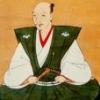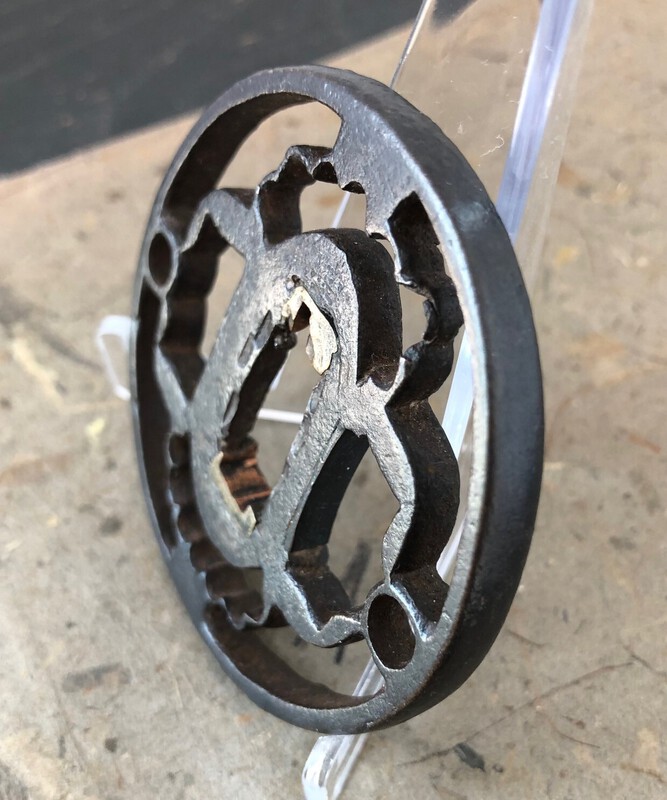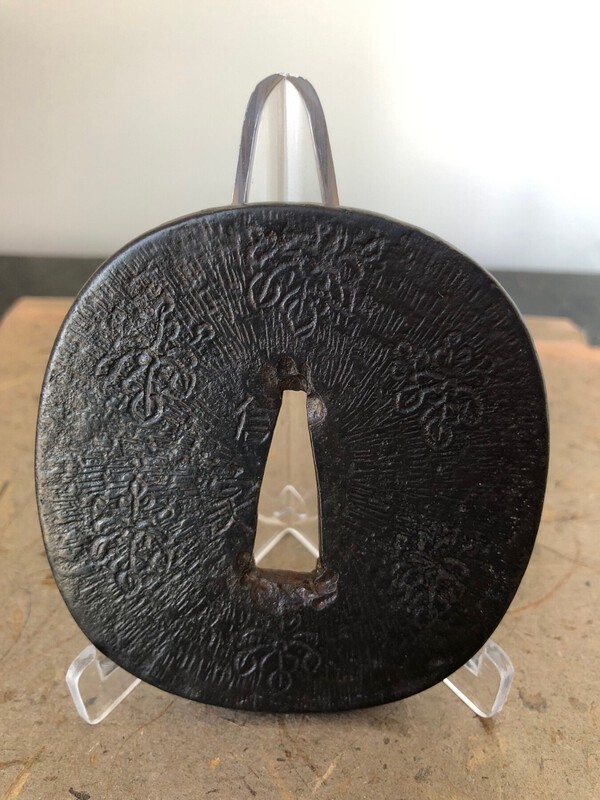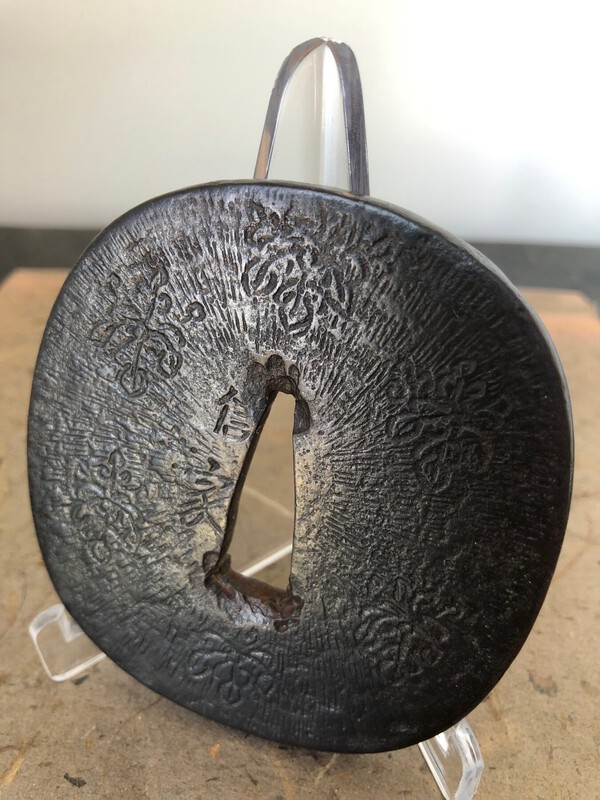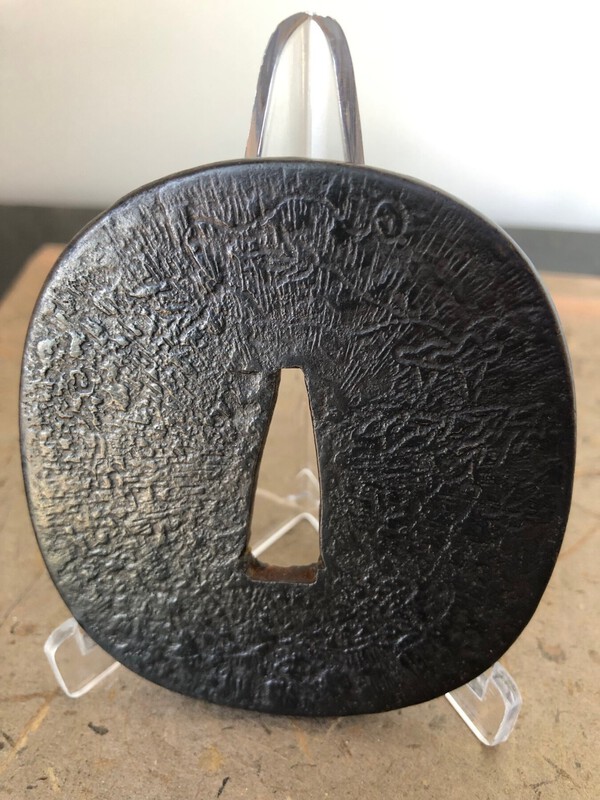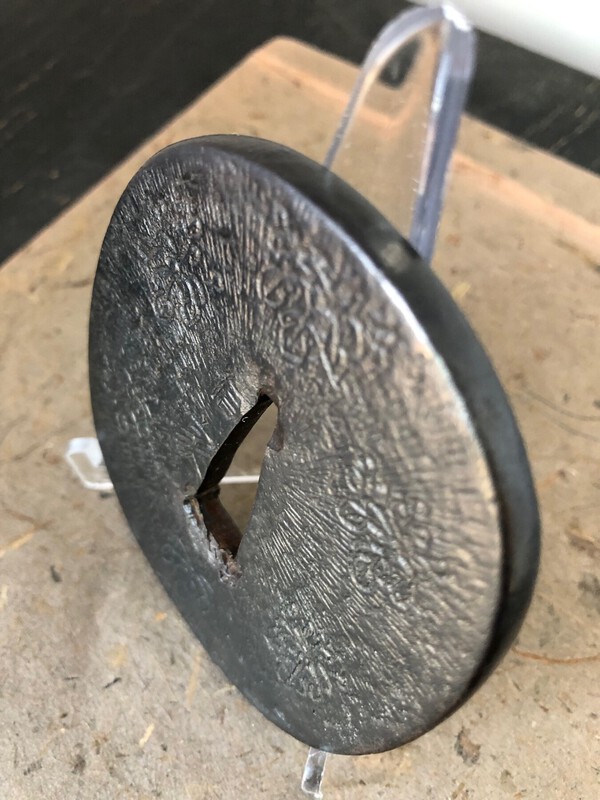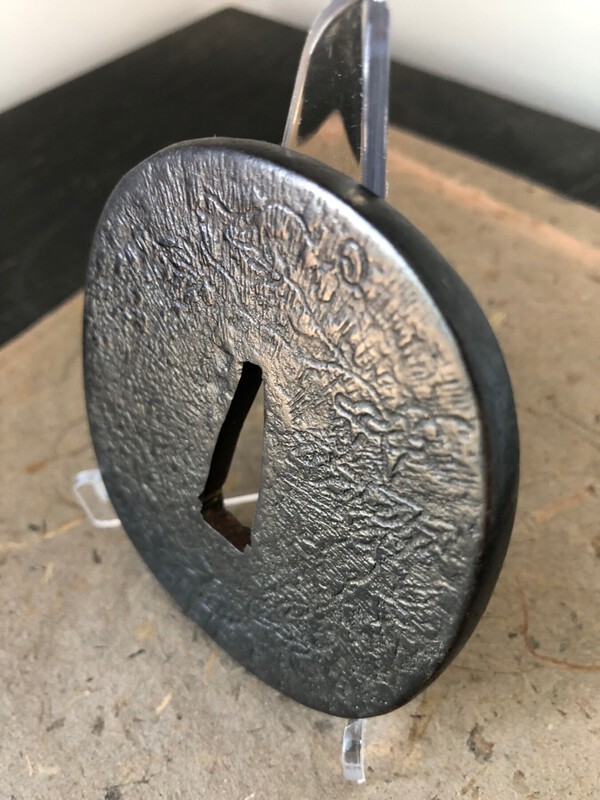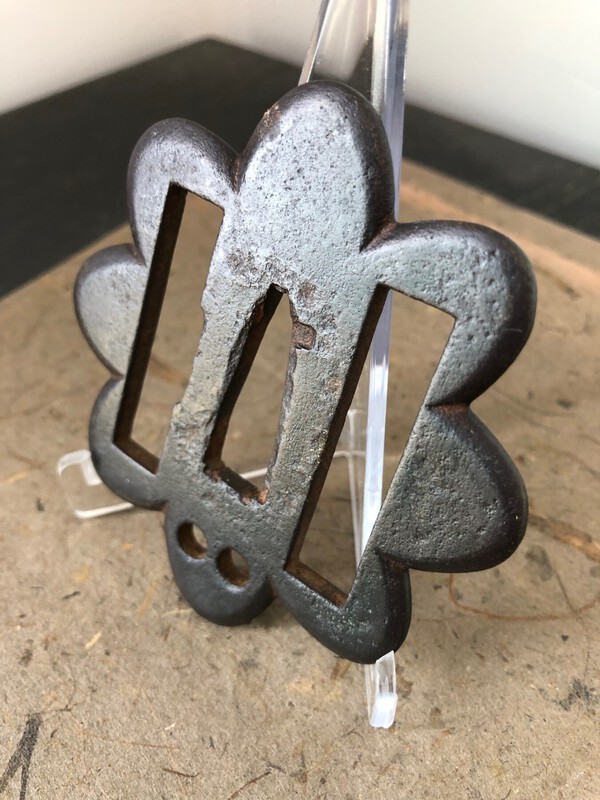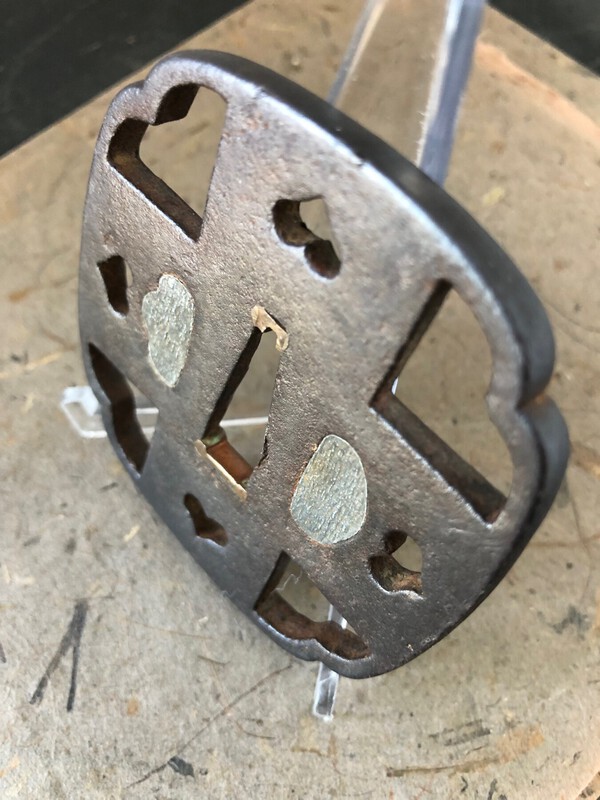-
Posts
818 -
Joined
-
Last visited
-
Days Won
3
Everything posted by Steve Waszak
-
Tsuba #1 is SOLD.
-
Hi Chris I think you're right. So, let's have a price drop. Tsuba 1 is now $350. Tsuba 2 is now $850.
-
"Yamakichibei," yes, but gimei.
-
It will be available via Lulu.
-
Fully concur. Kudos to Marco for the brilliant effort. It is a huge addition to Tosogu studies.
-
Fans of good early iron should appreciate these two tsuba being offered. Tsuba #1 is a Momoyama Period Owari guard of smaller dimensions (6.8cm x 6.7cm x 4mm) but which features excellent iron, as is characteristic of early Owari work. Subtle tekkotsu complements strong hammerwork. The color of the iron is beautiful, as is the fine patina the tsuba boasts. The motif is a little hard (for me) to identify. The pairs of birds at the top and bottom of the design are often described as wild geese (karigane), but the elements at the left and right represent subjects I am not sure of. The asymmetrical arrangement of these elements creates a sort of "wobble" that was highly appreciated in and mostly peculiar to Momoyama sensibilities. Edo Period Owari works are usually more "perfect" in the symmetry of their designs. This sword guard is centered by a strong, confident seppa-dai, and the nakago-ana is bordered north and south with what appears to be lead sekigane. The price is as low as it is only because of the smaller-than-usual size. $475 plus shipping. Tsuba #2 is a Momoyama Period Kanayama tsuba. The dimensions are 6.4cm x 6.5cm x 5.5/6mm. Such smaller dimensions are the norm for Kanayama works. As is also the norm for Momoyama Kanayama designs, the presentation of the motif is abstracted enough to become difficult to decipher for sure. It is a bold, strong design, however, enhanced by numerous blister-like tekkotsu on the very wide-for-its size rim. This tsuba, too, has a beautiful deep color, and a soft, natural patina. A soft-metal (yamagane/copper) glide has been inserted for the kozuka-ana. This piece exudes the archaic sensibilities expressed so notably in Momoyama Period Kanayama sword guards. Recommended for any Kanayama enthusiasts out there. $950.
-
Weekend price drop! Tsuba #1 is now $500. Tsuba #2 is now $800. "He who hesitates is lost!"
-
Thank you, Brent and Luca. Very happy you're enjoying your new acquisitions.
-
Brilliant, Marco. A wonderful addition. I am now signed up.
-
Tsuba is SOLD.
-
Offered here is a fascinating iron tsuba, signed Nobuie and very much in the vogue of the early masters of this lofty name. I doubt with some confidence that this piece is one actually made by the Nidai Nobuie, though the mei here is quite close to the "Futoji-mei" of the Nidai. The workmanship is excellent, featuring lightly engraved amida-yasuri as a backdrop for the bolder carving of several kiri-mon on the omote, and vines and leaves on the ura. The guard is notable and striking for a few different reasons. One of these is the deep yohkan color tightly associated with Nobuie, and apparently not easy to mimic, as it is not commonly encountered outside of Nobuie work. It is a color highly valued by many Japanese collectors. Additionally, the tsuba is quite thick, at almost/about 6mm, and is heavy in hand. The shape of the sword guard is one that the Nobuie smiths used with some frequency, especially the Nidai, and the fact that the piece is ubu (no hitsu-ana) adds a lot to the presentation of the motif and to the tsuba overall. Yakite work is more pronounced on the ura than on the omote, enhancing the beauty of that side, especially. The color and yakite are complemented by the tsuba's fine, natural patina, and by its excellent condition, as well as by gentlly-expressive tekkotsu in the rim. I think this piece is most likely an early-Edo (pre-1640) work, mostly likely created by a top student in an early-Edo atelier. The details noted above speak to a strong Nidai influence, and the mei is certainly much closer to his than it is to the Shodai's. This is a really good tsuba with a lot of presence, owing to its thickness, weight, color, shape, motif, treatment, and condition. Dimensions are 8cm x 7cm x 5.5 - 6mm. If I'm wrong, and this IS a Nidai Nobuie tsuba, whoever gets it is getting an all-time bargain. If you've ever wanted a real Nobuie-type swordguard but have been put off by the $five-figure prices they command, this is a real chance. *Note: I have no idea if the tsuba has been submitted to shinsa. $1,450, plus shipping.
-
Well, it seems I must have Marius write my sales posts for me! Thanks, Marius. Tsuba is now SOLD.
-
Tsuba #2 This is a beautiful sword guard featuring sukashi of "rays" in addition to gently-incised lines expressing the same. The motif here may be referencing the rays of Amida Buddhism. This tsuba boasts a subtly masterful shape, measuring 8.1cm x 7.9 cm. It is a very thin piece, just 2.5mm at the nakago-ana, and 2mm at the rim. The color and condition of the metal are both excellent. As with the tsuba above, if this, too, is an early example of Hirata Hikozo's iron guards, it is a fortunate find. $900 plus shipping.
-
Offered today are a pair of iron tsuba, both of which have Higo characteristics, and more specifically hint at being from the hand of Hirata Hikozo. It must be remembered that, while he is referred to as a Higo tsubako, Hirata Hikozo lived and worked in Higo province for only some three years, from 1632 to 1635, when he died. So, however long he lived, he spent relatively little time in Higo. His connection to Hosokawa Sansai (the Higo daimyo from 1632 to 1645), however, extends back well earlier than this; it was Sansai who brought Hikozo with him to Higo when he became the daimyo there in 1632. The degree to which Hikozo brought his designs with him to Higo may never be known, but these two tsuba may be examples of his earlier work in iron. Hikozo is much more well known for his incredible works in soft metal, but he is known to have created some pieces in iron; in fact, the only known signed Hikozo tsuba is iron. Tsuba #1: This is an eight-lobed sword guard measuring 8cm x 7.6cm x 4mm at the nakago-ana and 2.5mm at the rim. The nakago-ana on this piece is very large, indicating that it was fitted to a quite a sizable katana. Two extended rectangular sukashi are adjacent to the nakago-ana, and two udenuki-ana are present below it. The lobes are scalloped along the edges to create a beautifully modeled effect. The condition of this tsuba is excellent. There is a small notch cut out of one of the rectangles to accomodate a kuzuka. If this is in fact an early Hikozo work, it is quite the bargain. $650 plus shipping.
-
Kiri-mon Owari tsuba is SOLD.
-
Kiri-mon Owari tsuba is on HOLD.
-
-
Offered today are two Owari tsuba. I will provide descriptions for these separately below. 1. This tsuba depicts a kiri-mon motif designed in such a way as to depict a family crest, in all likelihood. The tsuba is iron, ji-sukashi, marugata, and dates to the later Momoyama or earliest Edo Period. Tekkotsu are present in the rim, and the finishing of the sword guard is done in a light tsuchime together with what appears to be yakite here and there. Dimensions are 78.5 x 77 x 5mm at the rim. This piece was included in the 2015 Kokusai Tosogu Kai catalogue, 11th International Convention and Exhibition. $550, plus shipping. 2. This iron sword guard is papered to Owari, and features a bold cross (ju-mon) design punctuated with inome in ko-sukashi. The particularly interesting aspect of this piece is that it is a design known to have been favored by the Yagyu, as it appears in the Owari Yagyu daimyo's illustrated inventory of tsuba designs. And, in fact, the appearance of the metal is reminiscent of Yagyu guards in that the surface has something of the "sandy" or "cloudy" quality associated with Yagyu works, and signs of striated laminations may be seen in places on the rim. The ju-mon motif has strong associations with the buke, especially in Satsuma Province. I believe this tsuba dates to the early-Edo Period. As with the other tsuba offered here, this one was included in the 2015 KTK catalogue. Dimensions are 73.5 x 69.5 x 5mm at the rim. Such dimensions are also consistent with Yagyu guards. $850, plus shipping.
-
Hi Luca, I've just downloaded your article. Looking forward to reading it! I'd love to see more of these well-researched, subject-specific articles on tosogu like this. Kudos, Luca, and many thanks for your efforts! Steve
-
Hi Michael, I think we're saying the same thing, though. Context matters, yes? I don't see how "things look different" based on your example. If anything, it reinforces my point. I would say, too, that one can't as easily compare blades and fittings. Blades were seen as important creations and signed (as such) from very early times, as you indicate, while the first regularly signed tsuba (which practice points to their being seen as elevated objects vis-a-vis their prior reception and primary function as simply "dogu" or "tools," for the most part) didn't appear until the latter half of the 16th century. But I like your example, because it strengthens the idea of considering objects not just for their material substance, but for their context and resulting cultural and historical importance. An additional statement to make here would be to note that such esteemed and, one would think, learned men as Gotoba and Hosokawa Tadaoki chose these craftsmen (among the many they could have selected) to work for them. In other words, I think we ought to be considering the fact that certain craftsmen, by virtue of their having been singled out for the honor of working for (being retained by) great lords (or emperors), have their importance elevated in the world of swords and fittings. This is part of the context of which I speak.
-
Agree with Thomas completely. For twice that I'd have snapped it up in an instant. Hirata Hikozo's guards are the ultimate in Tea-Culture soft-metal tsuba. And it must be remembered, Hosokawa Tadaoki, in addition to being a very active and successful military commander who saw dozens of battles in the field, was a very serious Tea Man. This mattered -- a lot -- in the times in which he lived.
-
I think what has to be recognized is the critical importance of context. Hirata Hikozo worked directly for Hosokawa Takaoki (Sansai), a highly significant figure in Japanese history. Futher, Hikozo was the elder tsubako among the "Big Four" Higo tsuba smiths (Shimizu Jimbei, Nishigaki Kanshiro, and Hayashi Matashichi being the others) that all worked for Tadaoki, and later, under his son. The combination of this hugely important history and the stupendous skill (and talent) and aesthetic sensibilities of Hikozo (for my money, easily the finest soft-metal tsubako ever) brings his tsuba to this level (and price point). The context in which much later artists worked was radically different, and was so far removed from the times when the Buke were active as warriors that their works must be regarded in this light. Hikozo died in 1635, which means he was born and lived his formative years in the brilliance, drama, and high tension of the Azuchi-Momoyama Period. All the cultural magnificence and political strife of this era constituted his milieu. A tsubako working at this time, for such an extremely important figure as Hosokawa Tadaoki, creates a contextual "magic" that the tsubako of the later, much more sedate Edo years don't enjoy. For me, personally, this context is everything. While artists like Natsuo and Goto Ichijo are brilliant in their technical mastery of material, the context in which they lived -- including a far lesser actively functional and semiotic importance of the sword and its fittings -- means that their work can't be regarded in the same way as that of Hikozo and others of the greatest tsubako of the Azuchi-Momoyama and very early-Edo Periods. The above just expresses my personal viewpoint toward simply saying that I understand the regard in which the tsuba in question is held, and why it would command the price it does. One other note in response to Stephen: I certainly can understand your feelings about six-figure tsuba. But considered in another light, if we view the very finest tsuba (including their contexts, of course) as pinnacle expressions of sculptural art in world history (which they are), and when we remember what sorts of sums highly-regarded Western artists (e.g. van Gogh, etc...) realize at auction, it could actually be argued that a $100,000 Kaneiye or Nobuiye tsuba is a bargain. But I digress here into philosophical rabbit holes concerning (relative) values of works of art...
- 102 replies
-
- 13
-

-

-
Dan, You ask Brian why he (and others) are so totally against the idea (if, in fact, that is accurate to say) that cast iron tsuba were made as a common practice in the Edo Period. I can't speak for him, but I suspect it may have something to do with the first point I made in my initial post: you rely heavily on a deductive approach instead of an inductive one, and appear to be guilty of wanting it to be true that cast iron tsuba were regularly made in the Edo Period. Wanting a particular outcome to be true prior to sufficient evidence being produced for that outcome is usually a fatal flaw in research methods and practices. It is tightly associated with the begging-the-question logical fallacy. Your words are pretty damning evidence of this deductive/begging-the-question approach (wherein you assume the very premise you are arguing for is true, rather than taking the much superior approach of not knowing IF it is true, and then using a rigorous inductive approach to see if it is): You don't seem to realize how logically problematic your words here are. You say you are "certain of this and have no doubt," and that "...it will definitely happen." And you say this based on "the results on this thread." But the results on this thread have not provided much if any concrete, incontrovertible proof (as opposed to hearsay and (often way- after-the fact/ narratives) that cast iron tsuba were regularly produced during the Edo Period. This more than suggests how much you want this idea to be true. Why is it that you so very much want, even need this to be true? And what, exactly, would it mean if it were true? And if it weren't? What is the deeper significance of the truth of one outcome versus the other? In any event, I suspect that no small part of the resistance some may have to your viewpoint has to do with your approach to it.
-
You know, Dan, I agree with you. I know that, at times, my own tone can come across harsher and more aggressive than I intend. I think this is partly due to the nature of electronic communication, whereby, for some reason, tones can be seen as colder than they were meant (Isn't this why emojis were invented?). In some cases, though, if the content of a post (its actual ideas and academic arguments) incites a clearly dismissive response, especially if that response does not seem to have been borne out of careful reflection and consideration), I myself can react too aggressively. So, I apologize for that. However, I stand by my original post here, and the ideas/arguments it presents. Thanks for the post, Dan.


